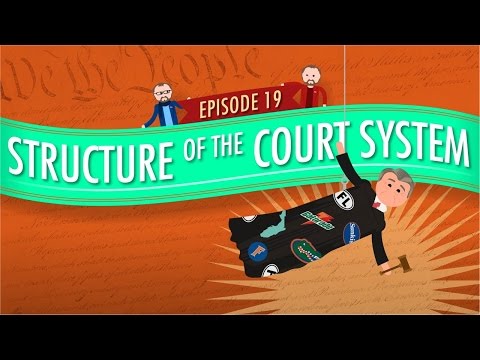
Welcome to this informative article on “Accessing US Courts: What You Need to Know.” Before we delve into the intricacies of this topic, it is important to note that while this article aims to provide valuable insights, it is always advisable to cross-reference information with other sources or seek advice from legal professionals. Now, without further ado, let us explore the fascinating realm of accessing US courts and the key facts you need to be aware of.
Accessing US Court Cases: A Comprehensive Guide
Accessing US Courts: What You Need to Know
When it comes to navigating the US legal system, understanding the process of accessing US courts is essential. Whether you are involved in a legal dispute, seeking justice, or simply interested in researching past cases, this guide aims to provide you with a comprehensive overview of how to access US court cases.
📋 Content in this article
1. Understanding Court Systems
The US court system is composed of federal and state courts, each with its own jurisdiction and authority. Federal courts handle cases involving federal laws, constitutional issues, and disputes between states. State courts, on the other hand, deal with cases related to state laws, including criminal, civil, and family matters.
2. Accessing Federal Court Cases
To access federal court cases, you can utilize the PACER (Public Access to Court Electronic Records) system. PACER provides online access to case and docket information from federal appellate, district, and bankruptcy courts. By creating an account on the PACER website, you can search for cases by party names, docket numbers, or keywords.
3. Accessing State Court Cases
Accessing state court cases varies from state to state. Many states have implemented online case search portals, which allow users to search for case information by party names, case numbers, or other relevant details. These portals usually provide access to both civil and criminal cases. Alternatively, you can visit the local courthouse and request access to physical case files.
4. Legal Databases
In addition to accessing court cases directly from the courts themselves, there are several legal databases available that compile court opinions from both federal and state courts. Some popular databases include Westlaw, LexisNexis, and CourtListener.
Understanding the Public Availability of US Court Documents
Accessing US Courts: What You Need to Know
In the United States, the court system operates on the principle of transparency, allowing access to court documents and proceedings. This means that the public has the right to view and obtain copies of many court documents. Understanding the public availability of US court documents is essential for anyone seeking legal information or involved in a legal matter. Here are some key points to help you navigate the process effectively:
Title: Accessing US Courts: What You Need to Know
Introduction:
Access to the US court system is a fundamental right granted to all individuals living in the United States. Whether you find yourself involved in a legal dispute, seeking justice, or simply wanting to understand how the court system works, it is crucial to stay informed about the intricacies of accessing US courts. This article aims to provide a comprehensive overview of key concepts and procedures in US law, underscoring the importance of staying current on this topic. However, readers should always verify and cross-reference the information provided, as laws and regulations may vary across jurisdictions and change over time.
Understanding the Structure of US Courts:
The US court system consists of federal and state courts, each with its own jurisdiction and authority. At the federal level, there are three main tiers: district courts, circuit courts of appeal, and the Supreme Court. State courts, on the other hand, are organized similarly but operate independently within their respective states.
1. District Courts:
District courts are the entry point for most federal cases. They handle a wide array of matters, including civil disputes, criminal cases, and bankruptcy filings. Each state has at least one district court, except for smaller states that share a district. It is important to note that district court decisions can be appealed to the circuit courts of appeal.
2. Circuit Courts of Appeal:
Circuit courts of appeal serve as appellate courts that review decisions made by the district courts within their geographic jurisdiction. There are thirteen circuit courts of appeal in the country, each covering specific states or regions. These courts primarily focus on determining whether errors were made during the proceedings or if the law was misapplied.
3. Supreme Court:
The Supreme Court is the highest court in the United States and has the power to review decisions made by lower courts. It consists of nine justices who are appointed for life by the President with Senate confirmation.
